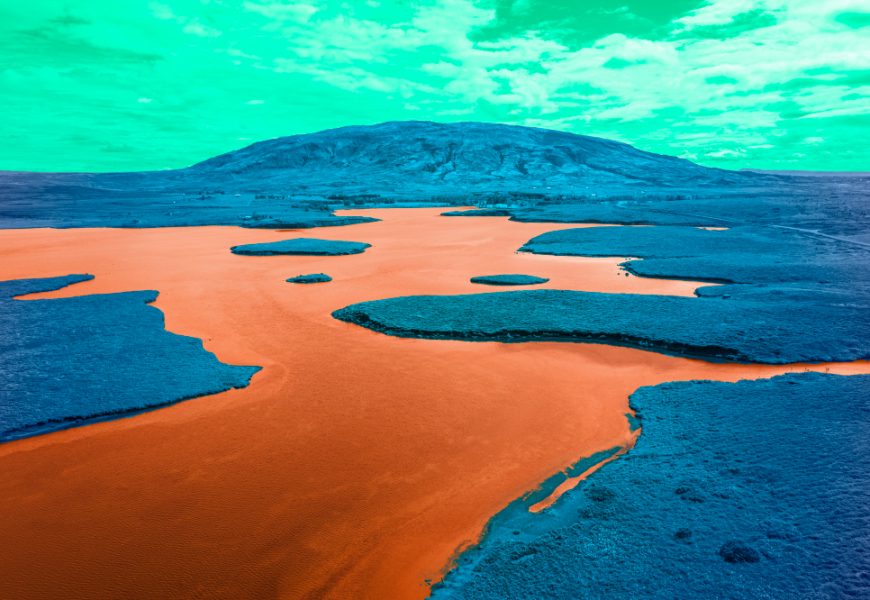From the rippled patterns of sandstone buried deep beneath towering mountain ranges to the whispering fossils of marine creatures now stranded hundreds of miles from any modern shoreline, the Earth’s surface holds a vast, silent record of ancient oceans that once ebbed and flowed across lands long transformed. These traces—chemical fingerprints locked into minerals, the distinct layering of sedimentary rocks, and even the magnetic direction frozen into iron-bearing crystals—act like geological diaries, revealing the shifting story of continents through deep time. What we see today as stable landmasses were once fragments adrift in primordial seas, drifting slowly on tectonic plates that record Earth’s restless, molten pulse. Through careful study of these clues, geologists reconstruct an ever-changing map where oceanic crust forms, subducts, and vanishes, and where continents migrate, collide, and reshape the face of the planet. Each cliff face and fault line becomes a chapter in a grand narrative, written not in ink but in stone and mineral, illustrating that the boundaries of continents and seas are never fixed—they are dynamic, cyclical, and profoundly interconnected. By tracing marine sediments in the heart of deserts or ancient coral reefs high in alpine peaks, scientists can follow the ghostly outlines of vanished oceans such as the Tethys, Iapetus, or Panthalassa, each of which once wrapped around configurations of continents utterly foreign to modern maps. These geological tales, painstakingly pieced together from scattered clues, offer not only a glimpse of Earth’s ancient geography but also insight into the processes that continue to shape it today, reminding us that the continents beneath our feet are travelers on a planetary journey billions of years in motion.
Reading the Stones: How Geology Reconstructs the Ocean’s Disappearing Acts
Unraveling this story requires more than simply identifying where remnants of ancient oceans lie—it demands understanding the interplay of forces that sculpted them, the dance between Earth’s internal heat and the cooling crust above. Plate tectonics lies at the heart of this detective work, driving the slow creation and destruction of ocean basins over eons. Spreading ridges open new seafloors while subduction zones swallow them back into the mantle, recycling materials and forging new continental crust.
In this continual cycle, the chemistry of rocks serves as a code that reveals past environments. The isotopic ratios in carbonate rocks record the chemical signature of ancient seawater, offering snapshots of temperature, salinity, and even atmospheric carbon levels. Microfossils such as foraminifera and radiolarians, preserved in fine-grained marine sediments, serve as tiny time capsules that chart biological evolution across vanished oceans. Distinctive mineral assemblages—like ophiolites, which are slices of ancient oceanic crust thrust up onto continents—pinpoint where seafloor once existed before tectonic forces uplifted and deformed it. Even the minute alignment of magnetic grains within volcanic rocks provides evidence for past movements of continents, showing how landmasses rotated and drifted in relation to Earth’s magnetic poles.
Together, these clues allow scientists to build detailed reconstructions of Earth’s paleogeography. They reveal how supercontinents such as Rodinia, Gondwana, and Pangaea assembled from smaller fragments, drifted together, and later broke apart into new configurations. Each collision and rift left traces—mountain belts where oceans once closed, or sedimentary basins where new ones began to open. By studying the remnants of ancient oceans like the Rheic, Iapetus, and Mesozoic Pacific, geologists can map how life and climate responded to these shifting arrangements. For instance, the closure of the Tethys Ocean through the collision of the Indian plate with Eurasia not only gave rise to the Himalayas but also influenced global circulation patterns, altering monsoons and long-term climate.
Reconstructing such immense and slow-moving changes requires an integration of disciplines—geochemistry, paleontology, geophysics, and computer modeling—each offering a different angle on the same story. Modern satellite measurements of plate motion, combined with field studies of ancient rocks, allow geologists to visualize how Earth’s crust evolves over hundreds of millions of years. The story that emerges is one of constant renewal: ocean basins open, fill with life, and disappear, while continental fragments drift, collide, and reshape the planet’s surface.
Such reconstructions not only satisfy our deep curiosity about the past but also provide insight into the present and future. Understanding past ocean–continent interactions helps scientists predict the distribution of mineral and energy resources formed in ancient marine environments. It also informs studies of long-term climate change, as the arrangement of continents and seas influences ocean currents, carbon cycles, and atmospheric circulation. The study of ancient oceans is thus more than an exercise in historical imagination; it is a key to perceiving Earth as a living, evolving system—one whose continents and seas continually write, erase, and rewrite the chronicles of our planet’s deep and ongoing story.









